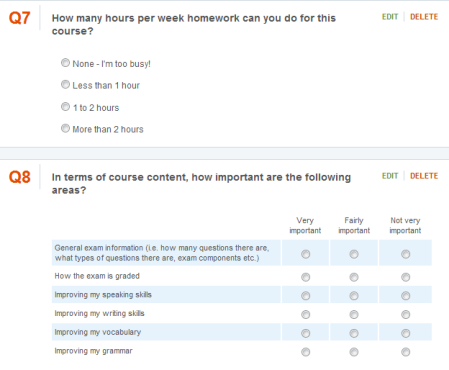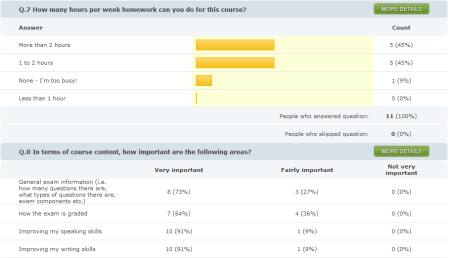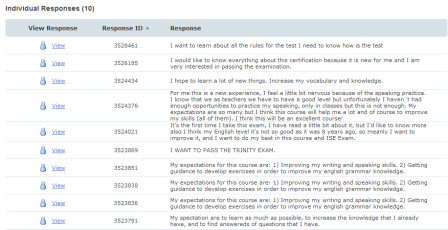If you are a reader of blogs by any of the more tech savvy teacher-bloggers such as Nik Peachy, then what I’m about to write may not seem that impressive. I don’t claim to be the first to use this web tool for this purpose either. That said, it’s still pretty cool and I think it’s well worth sharing.
Some background
With a new Trinity ISE prep course about to kick off at the end of the week, in an effort to save valuable class time (and prep time), I decided to use Polldaddy – the online polling and survey tool – to conduct a pre-course needs analysis (rather than using up the first hour of the first session of the course doing a paper-based one).

This was my first time using Polldaddy for anything (yes, believe it or not, my son’s name was chosen by my wife and I after I saw him in the hospital for the first time and not by asking blog visitors to choose their favourite from a shortlist of 5 or 6 possible names!) and so I wasn’t sure how it was going to work out.
Making it happen
As it happens, it worked out very well. Let me take you through it step by step.
After registering (ah yes, you do have to register first) with Polldaddy, the first stage, writing the survey, was a breeze. It’s a case of simply dragging and dropping question types into your survey (there are plenty of options including multiple choice, matrix grids and open questions, for example). I then added in question and response text as appropriate (exactly as it is on my paper-based version of the survey). Polldaddy also lets you insert links to websites and files if you so wish. The only down side here is that free account restricts you to 10 questions.
Once I’d written and saved the survey, I copied the link which Polldaddy generated and pasted it into an email which I then sent to all the course participants. When they click the link the survey opens (no need to download anything) and they see something like this:

Possibly the best thing is the way the results are presented. Responses to closed questions are presented in graphs and so I can instantly see for example, how many people can do an hour or more of homework each week, what percentages of participants are happy doing pairwork etc. Take a look:
In addition to the quantitative information, I can quickly browse through qualitative data from open questions:

Happy, happy
What can I say – a great tool which is easy to use and has saved me some serious time. So good in fact that I’m going to use it to carry out in-course self-assessment surveys and a post-course student satisfaction survey.
Try it!



 Posted by Mark
Posted by Mark